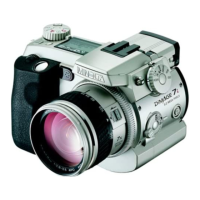Sometimes the camera’s exposure meter is deceived by certain con-
ditions.Exposure compensation can compensate for these situations.
For example, a very bright scene, such as a snowy landscape or a
white sandy beach, can appear too dark in the captured image.
Before taking the picture, adjusting the exposure by +1 or +2 EV will
result in an image with normal tonal values.
In this example, the dark scene appears bright and washed-out on
the LCD monitor. By decreasing the exposure by –1.5 EV, the rich-
ness of the sunset is preserved.
Flash compensation changes the ratio between the ambient and flash
exposures. For example, when using the fill-flash to reduce harsh shadows on the subject caused by
bright illumination or direct sunlight, flash compensation can change the ratio between the highlights
and shadows.The fill-flash will affect the darkness of the shadows without affecting the area illumi-
nated by the main light source. By decreasing the flash output with a negative Ev setting, the shad-
ows will receive less light and be deeper, but will bring out shadow details that would be lost without
the flash. Increasing the flash output by using a positive Ev setting will soften and can even nearly
eliminate shadows.
74
A
SHORT GUIDE TO PHOTOGRAPHY
Positive compensation
No compensation
Negative compensation
Using exposure and flash compensation

